“
In old wool classing standards, downs wools were actually classified as ‘hosiery types’ for this reason. This type of wool has a relatively coarse fibre thickness, which means it is better suited to being inside of fabric such as a quilt cover, as opposed to coming in direct contact with a person’s skin.
”
AUMORE WOOL
FACTS & FIGURES
You may have been told downs wool is the best type of wool for the production of wool quilts, but is there a genuine scientific basis for this assertion?
Aumore Wool contacted the global authority on wool, The Woolmark Company, and received some very important knowledge and wisdom on the topic from Woolmark’s General Manager for Research, Dr. Paul Swan. We’ve relayed Dr. Swan’s scientific communication about downs wool here to enlighten you in the simplest way possible.
In layman’s terms, downs wool fibres are highly crimped, yet the crimp isn’t a flat 2-dimesional wave as found in premium quality Merino wool, but a 3-dimension coil, allowing for excellent springiness. Dr. Swan studies the compressional properties of various fibres, and while doing so has discovered downs wools as being wonderful fibres for producing light, yet thick wool-based products. The result is products with wool that hold their shape and bounce back after being compacted.
Downs wools have great elasticity and so were previously used as the main fibre within wool hosiery yarns. In old wool classing standards, downs wools were actually classified as ‘hosiery types’ for this reason. This type of wool has a relatively coarse fibre thickness, which means it is better suited to being inside of fabric such as a quilt cover, as opposed to coming in direct contact with a person’s skin. Softer wools like Merino make excellent clothing, but do not have the ‘sponginess’ required to withstand a human being lying on top of it.
Dr. Swan’s research shows resistance to compressional force (E.G. how much a carpet can stand up to footsteps upon it) is a mathematical function of fibre diameter (thickness) and fibre crimp curvature. This means thick, tightly crimped fibres such as downs wool produce woolen structures (For example, yarns, carpets, and fibre mats like quilts), which are thicker, hold more air, and are harder to compress.
By contrast, thin, nearly straight fibres such as Optim wool or SRS fine wools produce thin, flexible, easily compressed and creased woolen structures. The traditional Italian recipe for fine wovens is: Fine diameter + A lot of fine crimp waves = Soft to touch, yet holds its shape (drape), and doesn’t crease too easily.
The AWTA (Australian Wool Testing Authority) has a relevant test method: the Resistance to Compression behavior test, which measures how much pressure is needed to compress 2.5 grams of clean, carded wool. Dr. Swan’s research shows downs wools (E.G. 28 microns thick, but with a crimp similar to an 18 micron fibre) always generate RtC (Resistance to Compression) values of greater than 10-12 kPa, while typical 18 micron Merino only generate values of around 8 kPa. Note: kPa means ‘kilopascals’, and is the metric unit used for the measurement of pressure.
In New Zealand, a measurement called ‘Core Bulk’ is used. This is an inverse approach measuring the volume occupied by 2.5 grams of clean, carded wool at a standard low pressure of 1 kPa. This complex and expensive test was designed specifically for New Zealand’s carpet industry, but its results are easily predictable by using the simple aforementioned Australian RtC test.
Both of these tests inform us greatly about the ‘space filling properties’ of various fibres. A third analysis also exists using the standard measure of fibre curvature and diameter, but only scientists who know the mathematical relationship between these two properties can perform this assessment.
How the crimp and diameter of a wool fibre affects space-filling properties is the main proof downs wool is the superior raw wool fibre for quilting. The science is here for you to see. Now, all you have to do is feel it for yourself!
Where our wool comes from
Where does Aumore Wool obtain the wool needed to produce its quality wool quilts? Our wool is 100% Downs Wool, processed in the state of South Australia.
We only source premium Downs Wool fleece, not wool shorn around the sheep’s belly, crutch, or from loose wool. Less than 1% of all sheep’s wool in Australia is Dorset Downs Wool, and we only use the best fleece from this already extremely rare wool.
The reason we use Downs Wool is because it is the best type of wool for making quilts. The diameter of the wool fibre is 32 microns, which means it’s incredibly springy compared to other wools. When squished down it has great ‘recovery’, meaning it bounces right back into shape. For quilts, Downs Wool feels spongy, so over time it doesn’t flatten down much when compared to less springy types of wool.
This Downs Wool is shorn from both lambs and full-grown sheep, the animals being able to produce wool for 8 to 9 years. Before its lanolin is removed, Aumore’s premium Downs Wools’ so-called ‘greasy length’ is 60mm to 70mm in measurement. These fibres are extremely long when compared to other wools, and for our wool quilts this means flyaway fibres rarely if ever occur.
Depending on the amount of vegetative matter in the wool, Aumore’s wool processor either simply combs and scours the wool (when it contains 0.1% to 1.0% of vegetative matter), or carbonises it (when it contains 1.0% to 5.0% of vegetative matter). Our wool processor is family owned by Australians, has been running for over 145 years (since 1870), and is the largest carbonising plant in the world. When the wool needs to be carbonised (cleaned) of excess vegetative matter, burr and seed is removed via an extensive and elaborate process.
When Aumore’s downs wool needs to be carbonised, the resulting carbonised wool is rated as OEKO-TEX-Standard 100 certified, Baby Class 1.
This means our carbonised wool has been tested after the entire carbonisation process has been completed to ensure no harmful chemicals remain on the fibre. The wool is also processed with APEO-free, green friendly detergents. Most important to note is carbonisation is done to remove excess vegetative matter from the wool, but does not affect its quality or safety aspects.
To clean the wool, the burr and seed is first shaken off, the wool is combed and scoured, washed, and then baked at 100 degrees Celsius, turning the vegetative matter into black ash. This ash is then removed via crushing and dusting processes. Finally, the wool is rewashed with green-friendly detergents. The entire process ensures no wool fibres are damaged.
Aumore Downs Wool quilts maintain an even temperature when you sleep on or beneath them, so you are warm and dry in winter, yet cool and dry in the summer. The wool can hold 15% of its weight in moisture without feeling wet, so you’ll have a more comfortable night’s sleep. Research studies have actually shown sleeping with wool provides an average of 7 more minutes of sleep per night, which equates to 2 whole days per year. This is significant to anyone who knows how important it is to feel energised during his or her waking life.







